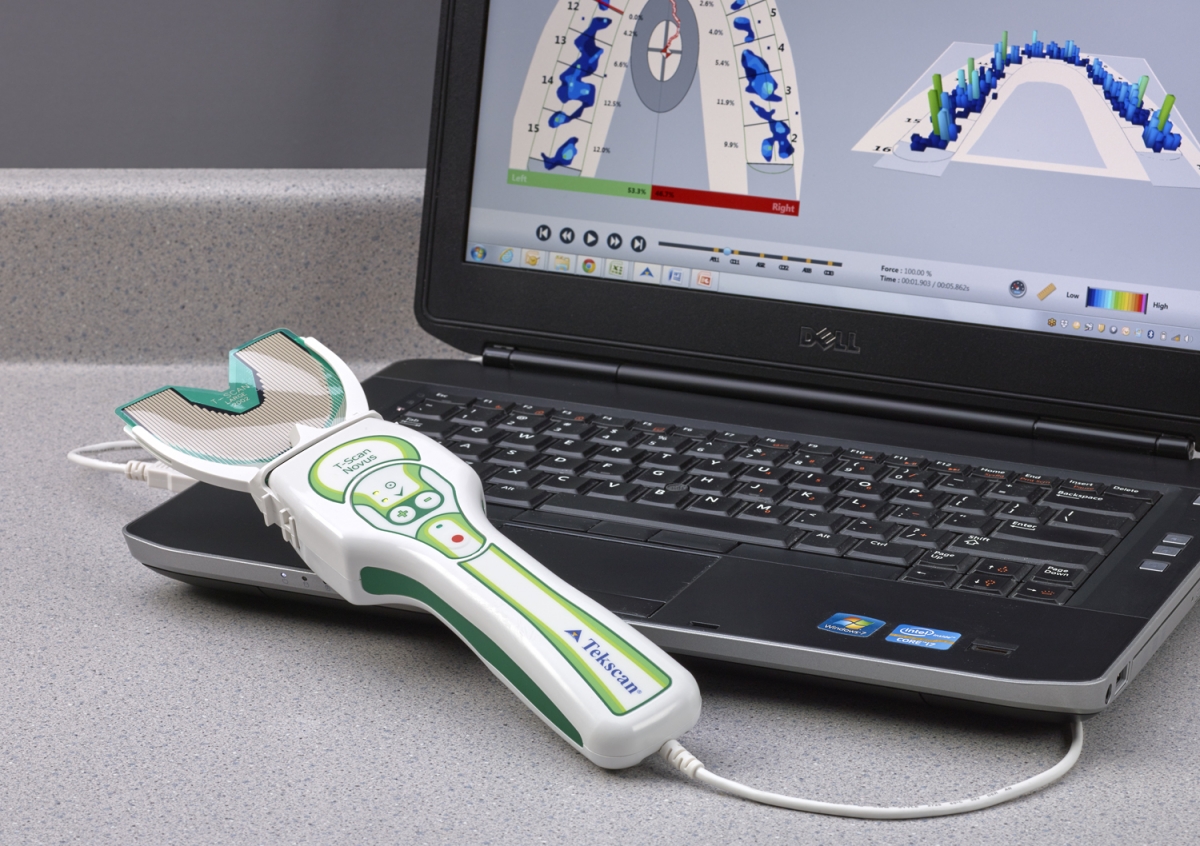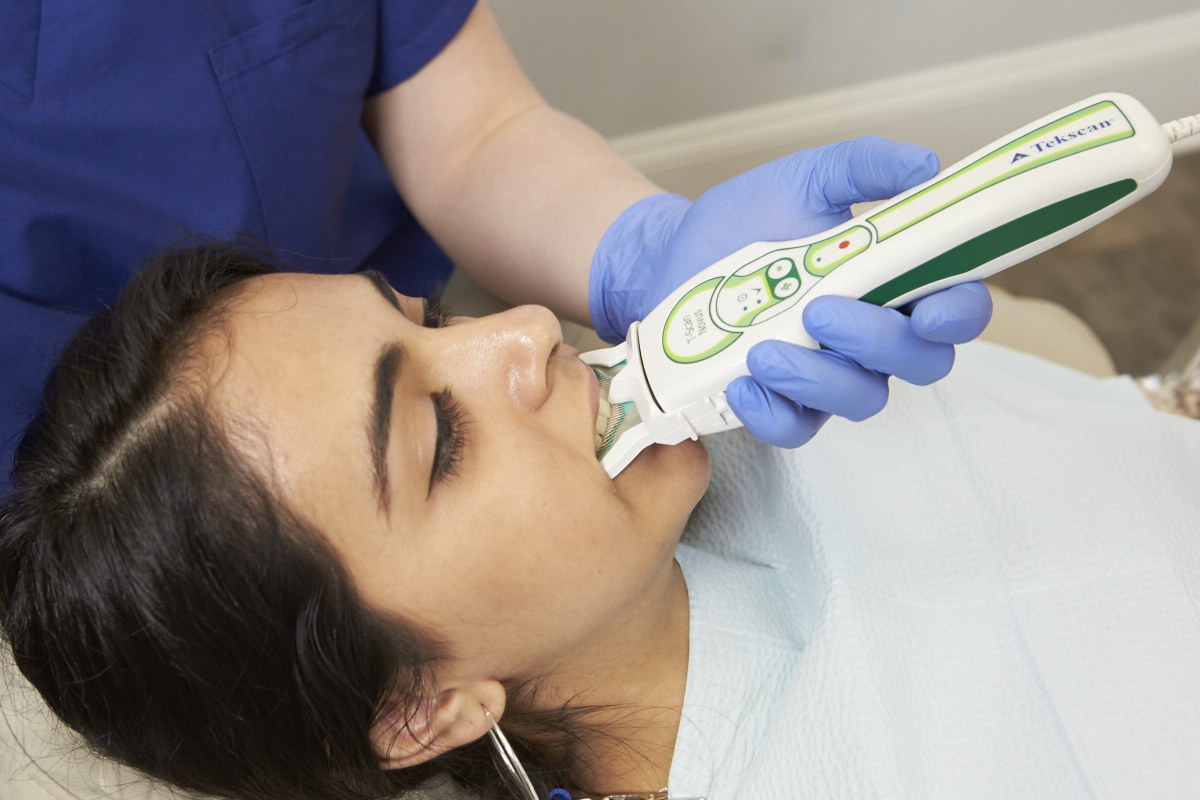Clinician Spotlight: Umar Haque
I have always enjoyed both the arts and sciences—and my dad happens to be an engineer. When I was deciding on a career choice, I felt that dentistry was the perfect combination of all three. I attended the University of Connecticut, School of Dental Medicine and graduated in 2002. I performed my residency at UIC, University of Chicago, and remained in the city after meeting the woman I would eventually marry. For a year after my residency, I practiced general dentistry with a large corporation then bought my own practice closer to the city. Now, I perform dentistry four days a week here in the Chicago suburbs. As my practice evolved, I began to address dental implants and their restoration—I wanted to learn more about how I could improve this area of my practice.
When did you become interested in learning more about occlusion?
I started taking courses on implants and I remember one lecture clearly where they touched upon a technology that allows you to digitally visualize the occlusion. The rest of the course only briefly covered the importance of occlusion, but it piqued my curiosity.
As I began to work though more cases, including some larger cases, I realized that occlusion is incredibly important. I met up with a great fellow, Dr. Barry Polanski, who wrote a book called, “The Art of the Examination.” I read his book, and Dr. Polanski happens to be a big proponent of Pankey and Dawson, so I decided to take a Dawson course to increase my knowledge of occlusion.
When were you introduced to T-Scan as a digital occlusal analysis tool?
I enjoyed the Dawson course so much that I ended up taking all of them. During this time I got a feel for the T-Scan. I later attended the mid-winter meeting in Chicago, saw the Tekscan booth, and purchased a T-Scan.
I incorporated T-Scan into my practice, and initially the adoption of the tool was slow. I used it on a couple of cases, maybe one or two a month at the most. Then I started getting into equilibrating the bite—that’s when I started using it a lot more.
Are there any early T-Scan use cases that stand out?
I remember one—it wasn’t a huge procedure. The patient needed a replacement bridge for another bridge that failed—he wasn’t a candidate for a dental implant because of his medical history. I ended up placing another bridge, which initially wasn’t great. I felt as though I got the patient’s bite right with articulating paper, but the patient seemed to disagree. I pulled out the T-Scan and noticed some clear interferences. I made the appropriate bite adjustments to balance the bite properly. The patient was ecstatic! Afterwards, the patient was so happy with the results that he ended up referring several great patients to my practice.
This isn’t the case with everyone—you’re not going to witness the “wow factor” as a result of your treatment in many cases. However, you do see this “wow factor” when your patients can see their bites in living color.
When patients come in with symptoms—and it’s clearly not just a cavity or gum disease—and they’re experiencing severe to moderate traumatic occlusion, they appreciate how I can objectively show them this information. I can talk until I’m blue in the face, but when they can actually see what’s going on in their mouths, it resonates so much more. Patients are willing to accept the treatment plans I recommend, because they understand the issue at its core.
Would you say that there is more case acceptance around T-Scan once patients see their bite?
I think there is a lot more case acceptance when we pull out the T-Scan, especially in cases where it clearly pinpoints the root cause of their symptoms. We’ve been able to convert many other patients with the T-Scan simply because they understand their occlusal issues.
It really is a mixture of things—I think photos are great, but the T-Scan truly helps quantify percentage-wise the kinds of forces patients feel in their mouths. Although different schools of thought rule over the dental industry, I believe the T-Scan can be implemented within any one of these schools, as long as you simply apply it to that school of thought. Ultimately, the end result is the same for everyone—there are just different paths to get there.
What aspects of the T-Scan software do you find the most useful?
When it comes to centric relation or centric occlusion, force percentage per tooth and left vs. right force percentages are the two things that stand out the most.
T-Scan’s ability to show force percentage per tooth is incredibly valuable. With this feature, I can identify symptomatic areas that show signs of occlusal wear or trauma. I used to sit with patients trying to be “Professor Haque” and after a few minutes, their eyes would gloss over and I’d realize they weren’t listening anymore. If you can’t capture patients’ undivided attention in the first few seconds, they stop caring. That’s when pulling out the T-Scan helps a lot because after visually recording their bite, they’re actively engaged in the process.
How do your patients respond to your use of T-Scan?

When I use T-Scan, patients aren’t exactly sure what the sensor in their mouth is doing—but they’re curious. I have the patients bite down and they can watch their bite appear on-screen in all kinds of colors and graphs. I’m able to measure and identify problem areas and verify what they’re feeling in their mouths. I’m able to understand my patients’ pain points on a much deeper level because of the data I collect with T-Scan.
At the end of the day, I’m not necessarily trying to sell dentistry. I’m selling patients on the idea that I want to fix it; I want to make it right. When I can actually show them bite force data, especially when it’s a holistically messed up case and I’m asking them to consider braces, they understand why I’m making that recommendation. I tell these patients that I could grind away on their teeth for days, but a balanced bite will never be achieved unless the teeth move.
T-Scan’s data makes it much easier for patients to accept the right treatment—it’s much simpler than trying to show them two models with a couple of dots on it. When I started with Dawson, we were doing diagnostic casts and mounting. It took hours of lab work to get patients to understand what a T-Scan can show them in two minutes. It makes a world of a difference in my operatory in terms of case acceptance.
How often do you use the T-Scan?
I use it almost every day. If I’m doing one composite on a patient, I’m not pulling it out. If I’m cementing a couple of implants, I’m definitely pulling it out. If I’m delivering some partial dentures, I’m pulling it out. I use it in a lot of cases.
What’s your perspective on the resistance many dentists show toward treating occlusion and occlusion in general?
It’s almost taboo. In dental school, we had maybe two lectures on occlusion, which is unfortunate. It’s a strange thing. I mean prosthodontists love occlusion and periodontists know the value of occlusion, but many general practitioners do not. I don’t exactly understand why. I think to a degree it might be laziness or an unwillingness to change or to open one’s mind, but I’m not sure why that would be.
There are different philosophies around occlusion, and it can be scary. In the early days of my practice, I remember when I would cement a crown and as long as the patient “felt good” about it, so did I. It was terrible, but that’s what I did. But when you start getting into bigger cases (e.g. full mouth), you realize that occlusion should be balanced if you want those teeth to last.
Again, whatever philosophy you are in, whether it’s centric relation or neuromuscular, you want to ensure a balanced occlusion. If it’s balanced, your treatment will last much longer than if it’s unbalanced. That’s the bottom line.
What would you like to see changed in dentistry -- because you are very understanding and receptive to the fact that there are other philosophies. Is there anything in particular about dentistry that you want to see change or happen?
I would love to see dentists be more open-minded to not only each other, but also to physicians in particular. One thing that’s worked really well for our practice is sending referrals to physicians. We receive referrals back from physicians, as well as chiropractors. I’ve seen some dentists’ reluctance to work outside of their little cottage industry. It’s beneficial to be open-minded about the idea. It’s better to be symbiotic than antagonistic.
Unfortunately, this isn’t the mindset of every dentist in the industry. I fear that if we don’t begin to work with others, our industry will be eaten up.